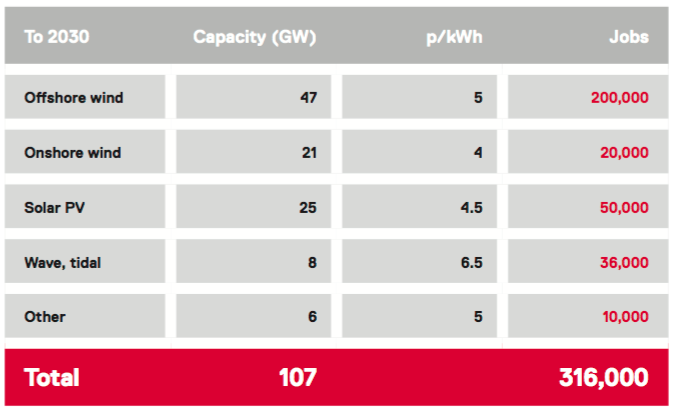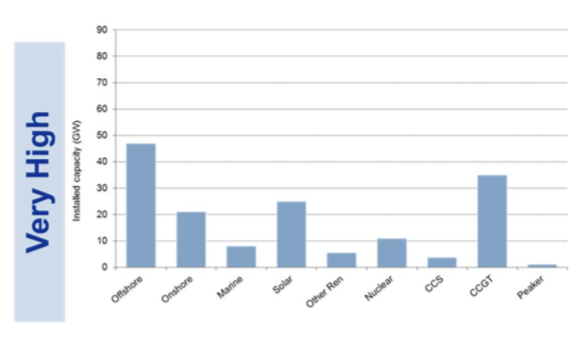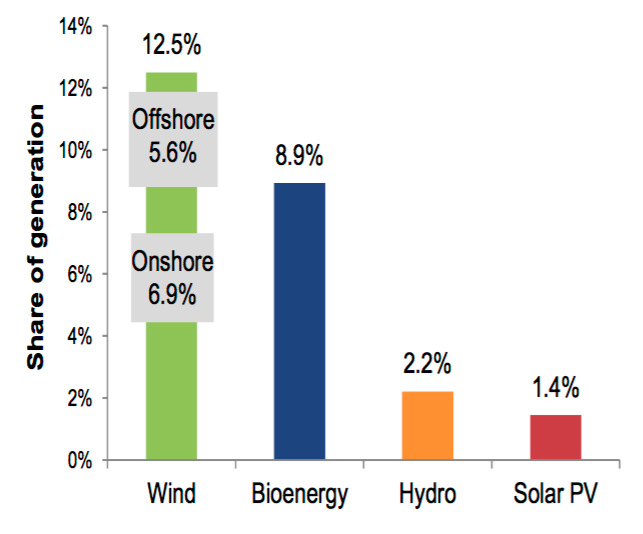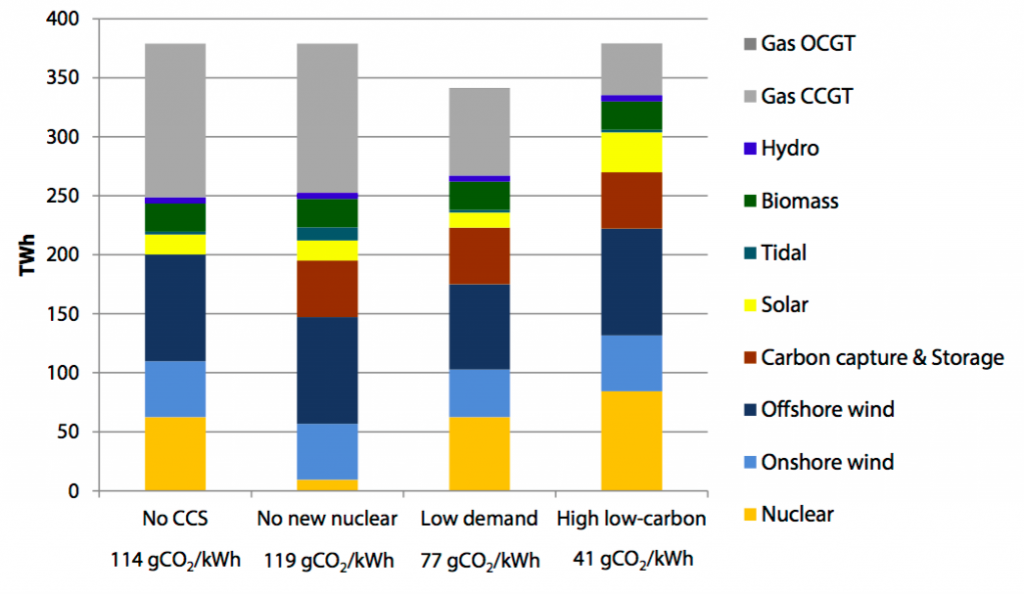Sophie Yeo
07.09.2016 | 5:23pmA manifesto for energy and the environment, released by Jeremy Corbyn today, explains how a future Labour government would tackle climate change.
Launched in Nottingham by the Labour leader as part of his re-election campaign, the manifesto commits the government to generating 65% of Britain’s electricity from renewables by 2030, possibly rising to 85% if circumstances permit.
Corbyn also says he would create 300,000 jobs in the renewables sector, ban fracking, restore the Department of Energy and Climate Change, and phase out coal-fired power in the early 2020s.
Writing in the Guardian, Corbyn says:
Details
Increasing renewables in the electricity mix to a 65% share represents quite a jump on current levels. In the first quarter of 2016, renewables accounted for 25.1% of the UK’s electricity generation, according to government figures (pdf).
Corbyn says the renewable electricity in 2030 will be sourced from a combination of onshore and offshore wind, tidal power, solar and a small amount of other renewables. His document includes the following breakdown of the 65% renewables element of the electricity mix in 2030:

Corbyn’s targets for renewables capacity, prices and associated jobs by 2030. Source: Jeremy Corbyn: Energy and Environment
The capacity figures are taken from a 2011 report by Poyry, which modelled various scenarios for 2030. Corbyn has adopted the “Very High” renewables scenario, which delivers around 158 gigawatts of installed capacity.

Installed capacity of electricity in 2030, under a very high renewables scenario. Source: Poyry, 2011; Analysing technical constraints on renewable generation to 2050
Curiously, the scenario excludes specifically mentioning biomass, which currently generates almost 9% of the UK’s electricity, primarily through the converted power plants at Drax. However, it might be included within the “Other Ren” category.

Share of renewables power generation in UK, Q1 2016. Source: UK Government, Renewables
Corbyn has expressed support for biomass in the past. In 2010, he supported a motion to provide increased support and confidence to biomass co-firing units “to produce sustainable, cost effective and reliable renewable electricity in support of the UK’s climate change targets and security of supply”. He supported another motion in 2009, calling for a cap on co-firing of biomass and coal to be increased.
The benefits of biomass are complex and controversial, as a Carbon Brief investigation explored last year. In certain circumstances, it can dramatically reduce emissions compared to burning coal; in other cases, it can be worse.
The scenario also depends on floating wind turbine technology becoming commercially deployable by 2030, according to the Poyry report. It also relies on some carbon capture and storage being deployed — a technology that is currently non-existent in the UK.
It is worth bearing in mind that the above chart shows installed capacity. The equivalent figures for generation by 2030 in the Poyry report also show about 65% of the total 444TWh of electricity being produced by renewable sources.
The figures used in the Corbyn manifesto are roughly in line with modelling by the Committee on Climate Change, the government’s independent advisors. The following graph shows power supply hovering at around 380TWh in 2030, compared to 444TWh in the Poyry modelling. Around 250TWh of this comes from renewables (excluding nuclear).

Power sector scenarios for 2030, based on CCC modelling — high low-carbon scenario echoes Corbyn’s scenario. Source: Committee on Climate Change; Power Sector Scenarios for the Fifth Carbon Budget
The figures for the price of power, pence per kilowatt hour, appear to use the CCC’s lowest possible projections for 2040, which is inconsistent with the rest of Corbyn’s target and is not clear from the manifesto itself — see page 22 of this CCC document (pdf).
Rebecca Williams, WWF-UK’s climate and energy specialist, tells Carbon Brief that it is difficult to assess Corbyn’s scenario based on the available information:
Previous statements
Corbyn set out the first incarnation of his vision in August 2015, when he was first running for leadership of the Labour party.
This document talks about the need to set “a bold target of carbon-free electricity by 2030”. This would involve removing restrictions on onshore wind and large solar projects, it says.
Corbyn’s earlier manifesto also supported a ban on fracking and on a phase-out for coal-fired power stations. It also expressed his opposition to new nuclear. It says:

